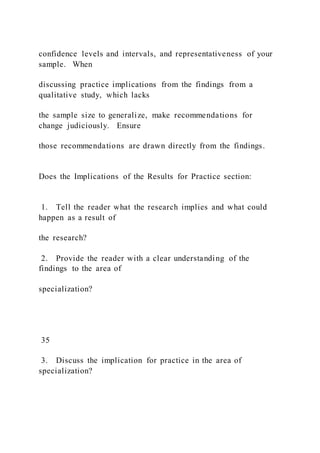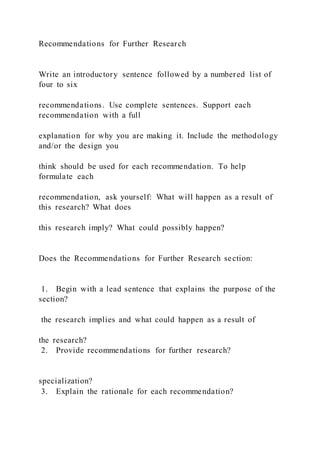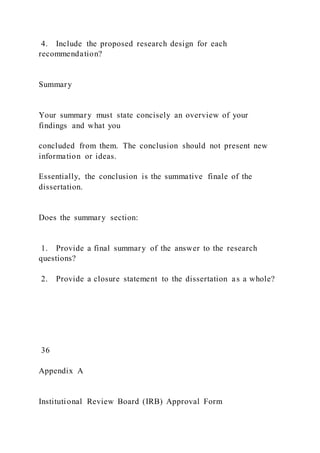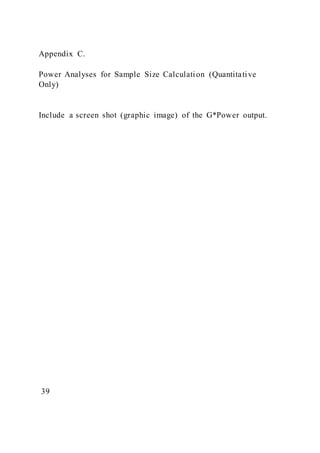The document discusses the increasing graduation rates in American high schools, which, while positive, contribute to overcrowded classrooms and a shortage of educators, posing threats to academic quality. The study aims to address the effects of overcrowded classrooms on the performance of educators, students, and administrators, advocating for innovative strategies and the use of technology to enhance resilience and educational outcomes. Through qualitative research, the study seeks to gather insights on experiences with overcrowding to develop effective management strategies that can improve the educational environment.
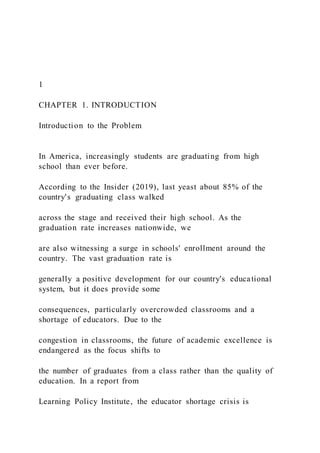





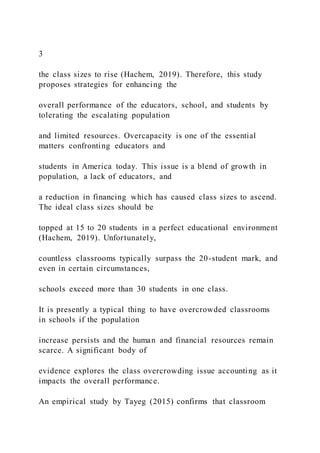
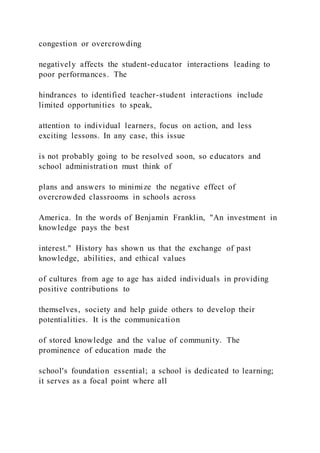
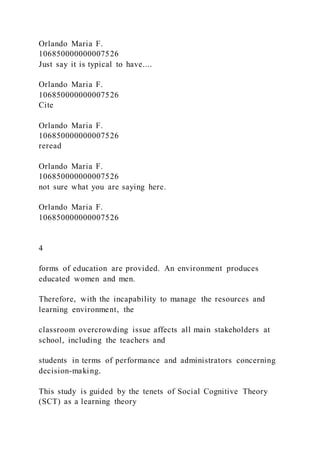
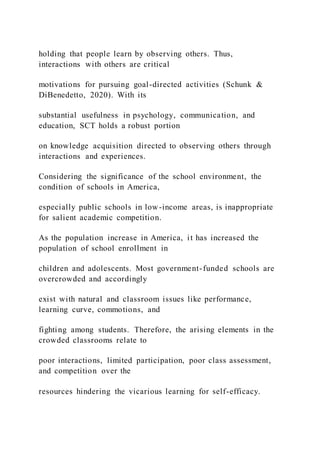


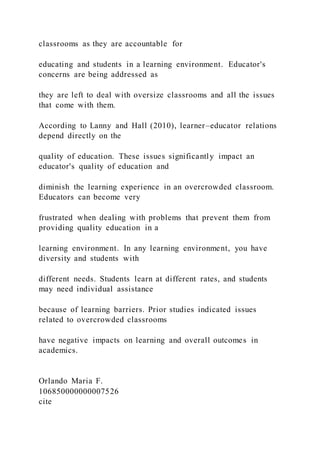

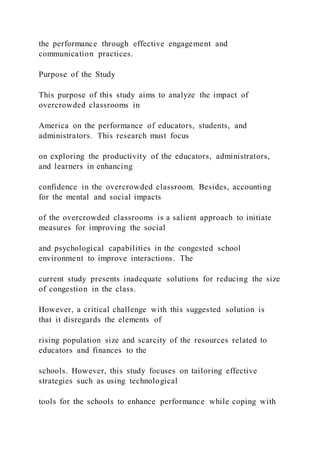


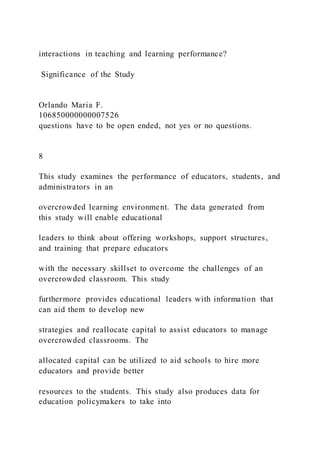

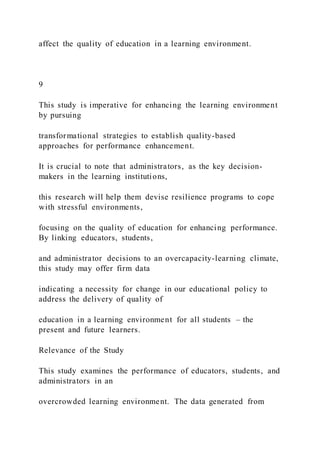


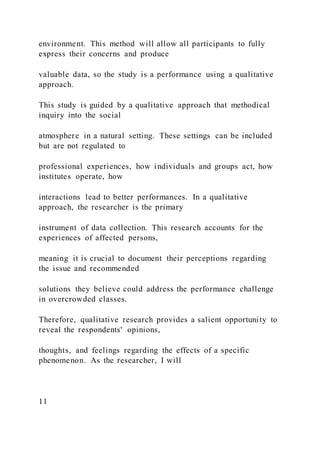


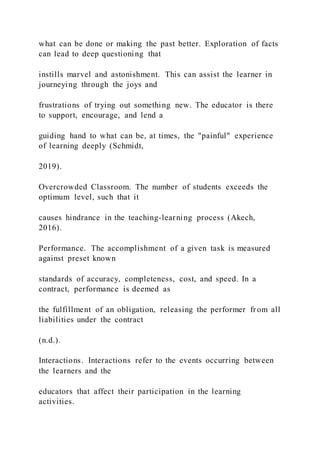

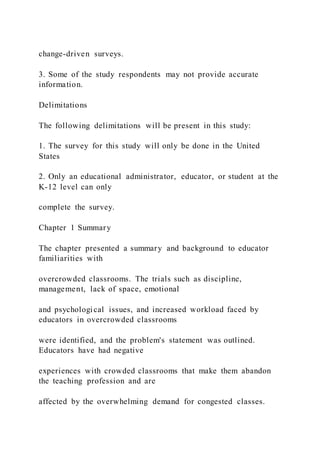




![Tayeg, A. (2015). Effects of Overcrowded Classrooms on
Teacher-Student Interactions Case
Study EFL Students at Biskra University [Master's thesis].
http://archives.univ-
biskra.dz/bitstream/123456789/5846/1/Tayeg%20Asma%20.pdf
https://www.weareteachers.com/what-is-classroom-
management/
https://www2.ed.gov/policy/elsec/leg/esea02/pg1.html
https://www.newtimes.co.rw/section/read/97865
https://plpnetwork.com/author/geralyn/
https://doi.org/10.1016/j.cedpsych.2019.101832
http://archives.univ-
biskra.dz/bitstream/123456789/5846/1/Tayeg%20Asma%20.pdf
http://archives.univ-
biskra.dz/bitstream/123456789/5846/1/Tayeg%20Asma%20.pdf
Chapter 1. INTRODUCTION
Introduction to the Problem
In America increasingly students are graduating from high
school than ever before. According to the Insider (2019), last
yeast about 85% of the country's graduating class walked across
the stage and receive their high school. As the graduating rate
increase nationwide, we as a country are also witnessing a surge
in schools’ enrollment around the country. This generally a
positive development for our country's educational system but it
does provide some consequence, in particular, is overcrowded
classrooms and a shortage of educators. In a report from
Learning Policy Institute, the educator shortage crisis is
present, and it will get worst and the educator occupation is at
its lowest point in 20years (Floyd, 2019). Overcrowding in
schools has become major fretfulness in our educational system](https://image.slidesharecdn.com/1chapter1-220920210120-64a59464/85/1CHAPTER-1-INTRODUCTIONIntroduction-to-the-Problem-33-320.jpg)
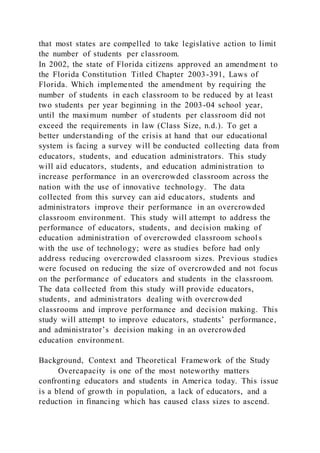

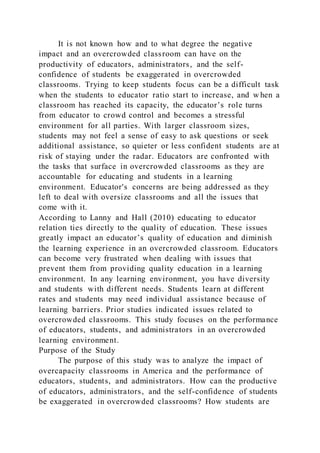
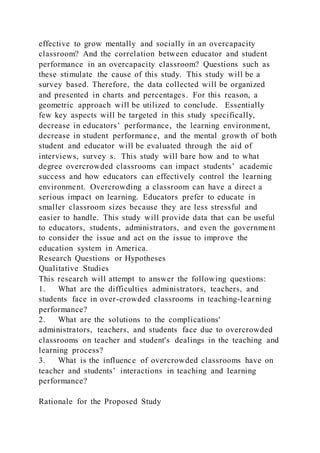
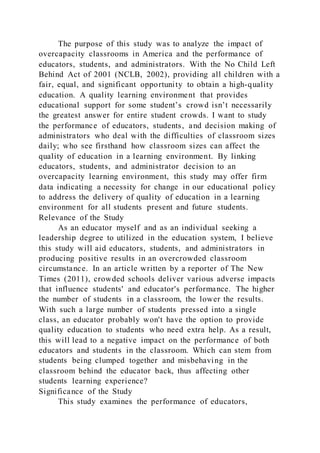


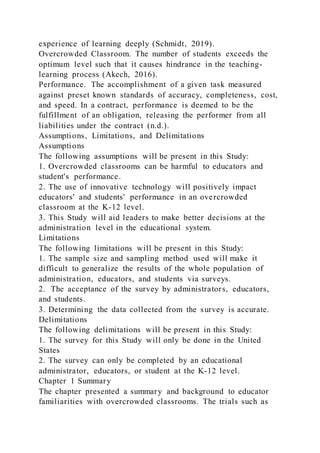
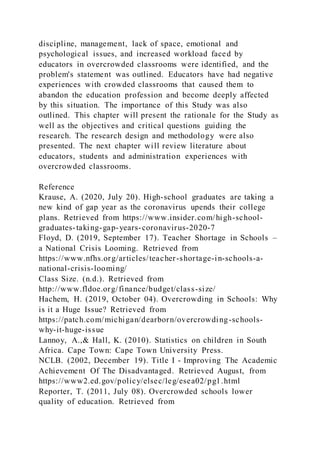
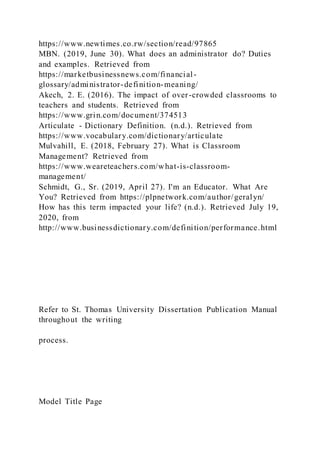

![__________________________
(name of chair, highest earned degree, title, and affiliation)
Committee Member
__________________________
(name of chair, highest earned degree, title, and affiliation)
Committee Member
Commented [Dr. KM1]: This dissertation Rubric should
be used to help you draft your dissertation using the
qualitative or quantitative dissertation templates separately
provided . Do not draft your chapters on this rubric but use
the templates.
Commented [Dr. KM2]:
The title page is not numbered
There is no running header in dissertation documents
There should be no additional chapter sections unless your
chair approves.
Commented [Dr. KM3]: Title should reflect method or
design and some sense of geographic scope of the study
along with key study variables and/or constructs] no more](https://image.slidesharecdn.com/1chapter1-220920210120-64a59464/85/1CHAPTER-1-INTRODUCTIONIntroduction-to-the-Problem-45-320.jpg)



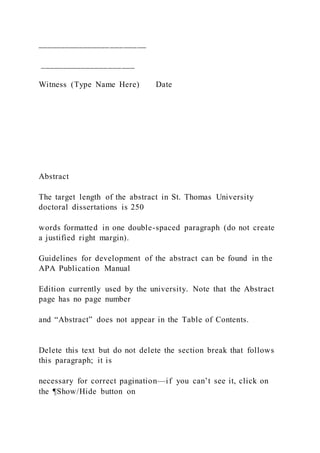
![the formatting toolbar.
Additions to abstract?
Commented [Dr. KM4]: Abstract is one page, double
spaced with no indentation and no paragraph breaks.
iii
Acknowledgments
This page is typically included in a dissertation. Refer to the
Dissertation
Publication Manual regarding who should be acknowledged on
this page. The
“Acknowledgments” entry does appear in the Table of Contents.](https://image.slidesharecdn.com/1chapter1-220920210120-64a59464/85/1CHAPTER-1-INTRODUCTIONIntroduction-to-the-Problem-50-320.jpg)
![Commented [Dr. KM5]: Acknowledgment does not
exceed 1 page in length and is drafted after Ch 5 is complete
iv
Dedication
Refer to the Dissertation Publication Manual regarding who
should be
acknowledged in a dedication (this page is often included,
although not required, in a
dissertation). The Dedication page is numbered, but
“Dedication” does not appear in the
Table of Contents.](https://image.slidesharecdn.com/1chapter1-220920210120-64a59464/85/1CHAPTER-1-INTRODUCTIONIntroduction-to-the-Problem-51-320.jpg)
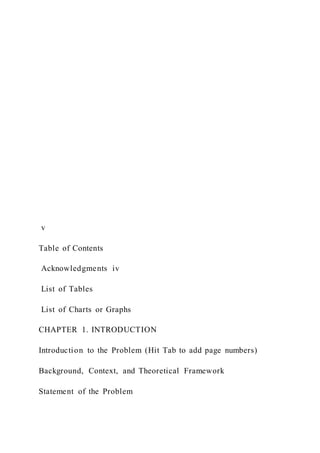


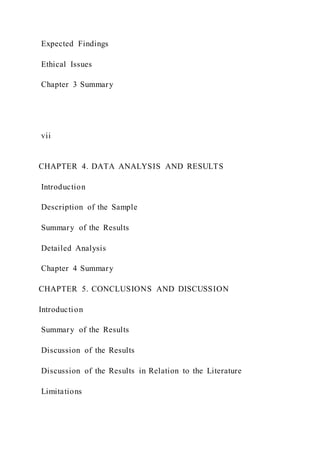


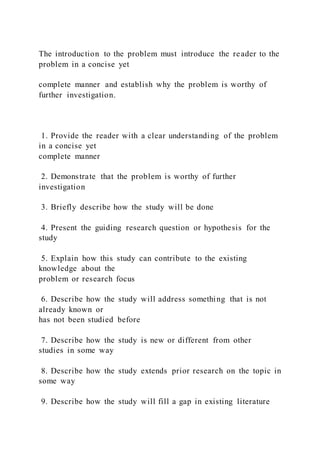
![or research
Background, Context and Theoretical Framework of the Study.
The background, context, and theoretical framework of the
study should tell the
reader what has happened in the past to create the problem or
need today. It is a brief
historical overview that answers these questions: What do we
know? What created the
problem? When did the problem begin, and for whom is it a
problem? What research has
been done?
This section provides information necessary to allow the reader
to understand the
background of the problem and context in which the problem
occurs. The primary
objectives in writing this section are (a) to provide a brief
overview of research related to
the problem; (b) to identify and describe the key components,
elements, aspects, concepts
Commented [Dr. KM6]: Page numbering for Chapter 1
begins with page 1](https://image.slidesharecdn.com/1chapter1-220920210120-64a59464/85/1CHAPTER-1-INTRODUCTIONIntroduction-to-the-Problem-59-320.jpg)



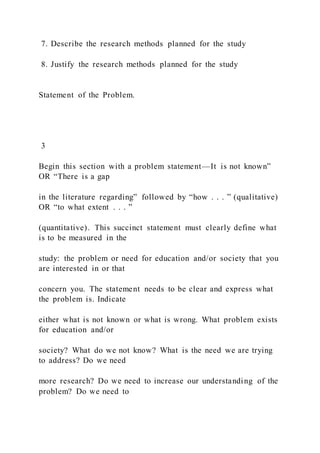
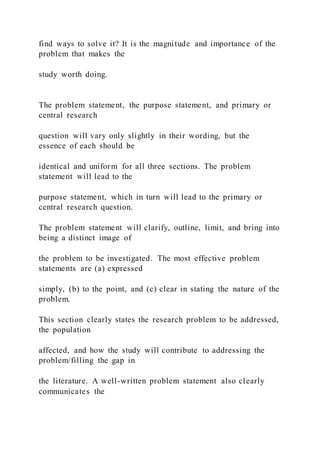

![study is to . . . in order to . . .”). Within the larger problem or
need, this is the part
that you are going to study. Ask the questions: What are you
going to do, describe,
predict, improve, or explain? What needs to be done? Are you
going to find out who is
affected and how (descriptive), what characteristics/phenomena
are associated with the
problem (prediction), what factors contribute to the problem
(explanation), and/or what
programs and services are needed to address the problem
(improve)?
4
attitudes, practices, and
barriers [interesting terms—each will need to be defined and
examined carefully as
related to the explanation of your study] of parental
involvement as perceived by middle](https://image.slidesharecdn.com/1chapter1-220920210120-64a59464/85/1CHAPTER-1-INTRODUCTIONIntroduction-to-the-Problem-66-320.jpg)

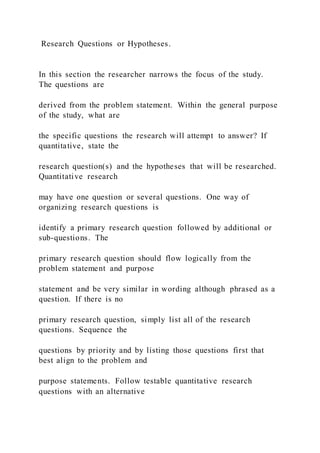
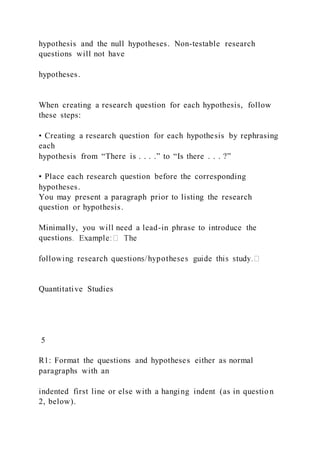
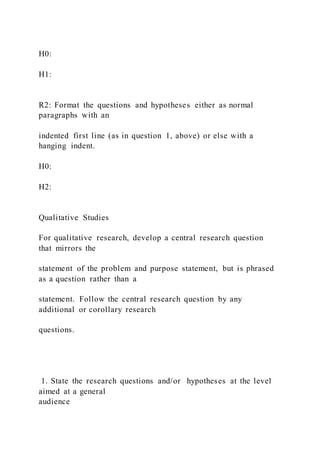

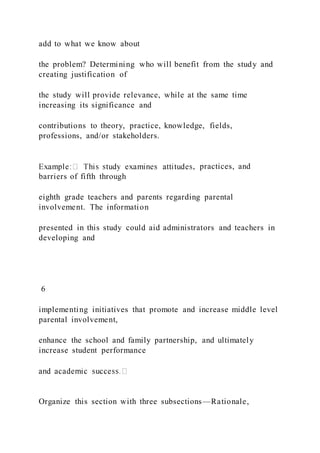
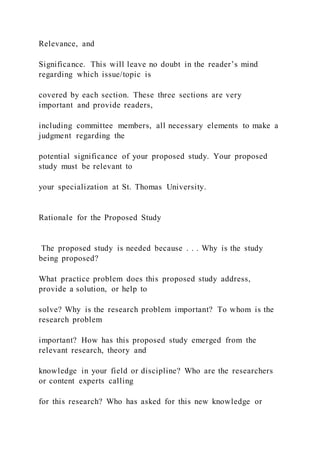







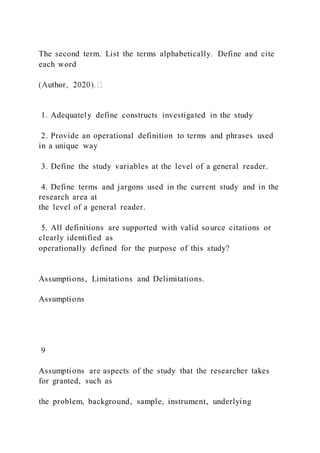

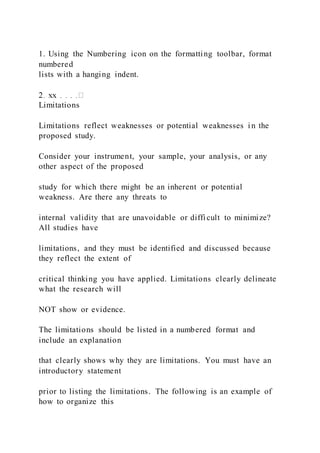




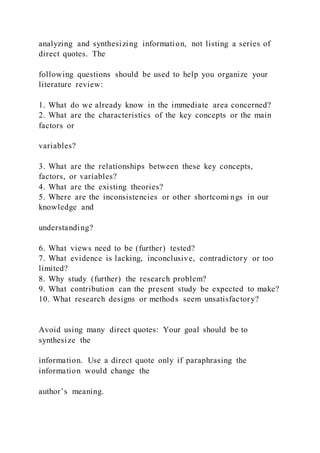
![Commented [Dr. KM7]: A complete chapter 2 is
approximately 25-30 pages in length without references.
12
Does the Introduction section:
1. Describe the purpose of the study
2. Describe the overall importance to the field.
3. Describe why the field is interested in the topic.
4. Describe how the study addresses something that is not
known or has not
been studied before.
5. Describe how the study is new and different from other
studies in some way.
6. Describe how the study extends prior research on the topic in
some way
7. Describe how the study will fill a gap in the existing
literature.
8.Describes literature search process with sufficient detail
that a reader can
understand](https://image.slidesharecdn.com/1chapter1-220920210120-64a59464/85/1CHAPTER-1-INTRODUCTIONIntroduction-to-the-Problem-89-320.jpg)

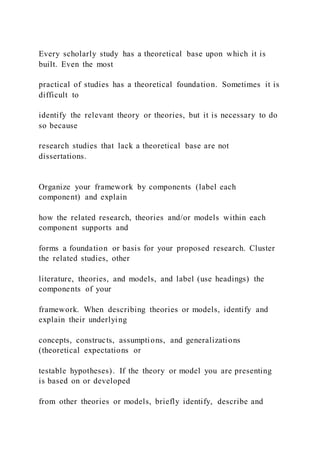

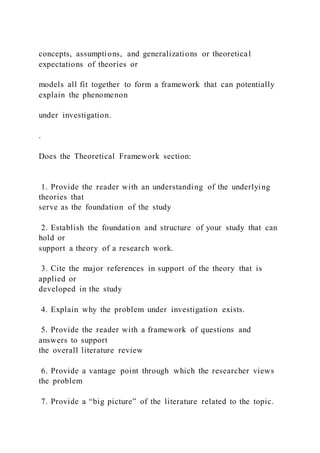




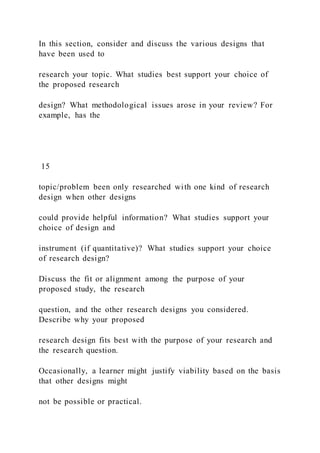
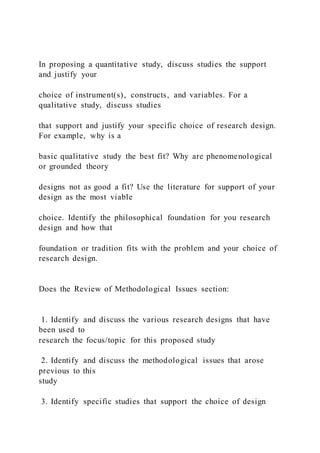



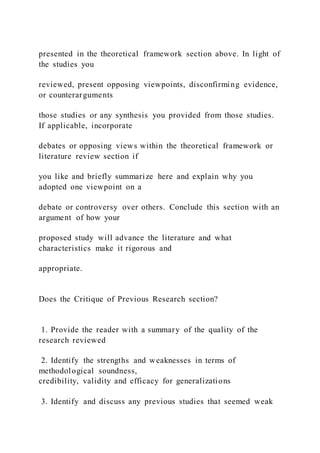


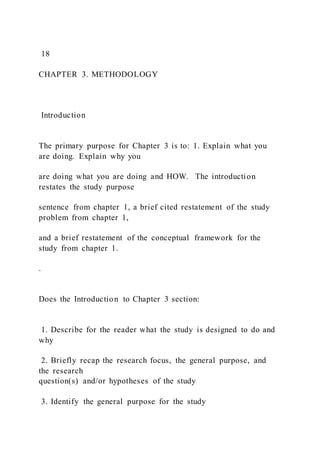


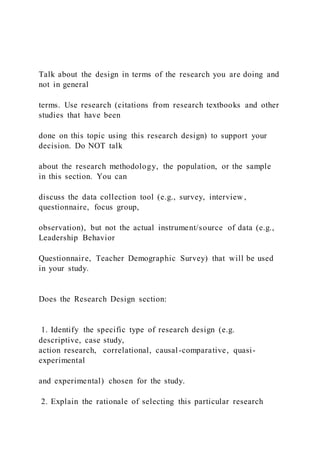


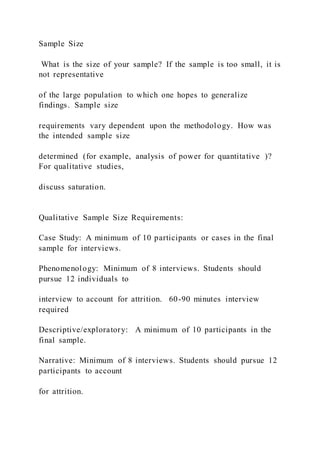
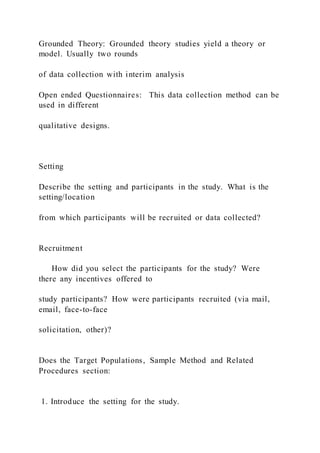

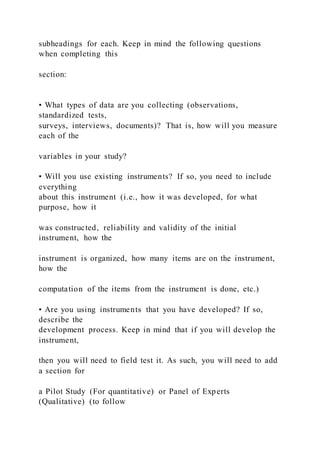








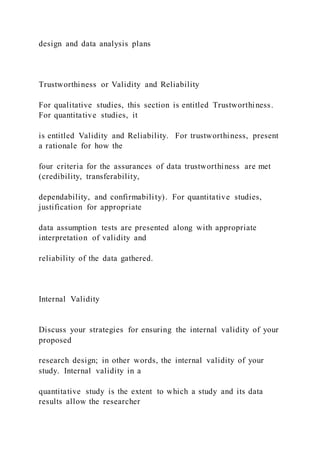
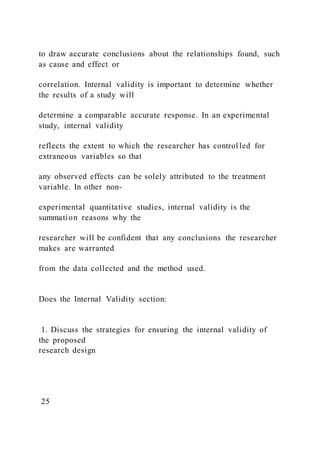
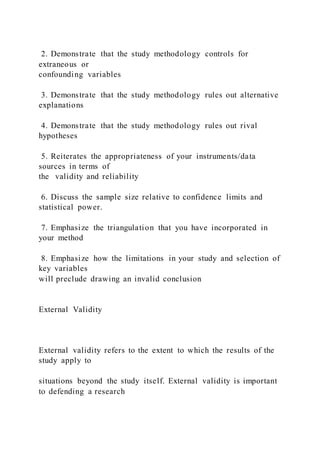

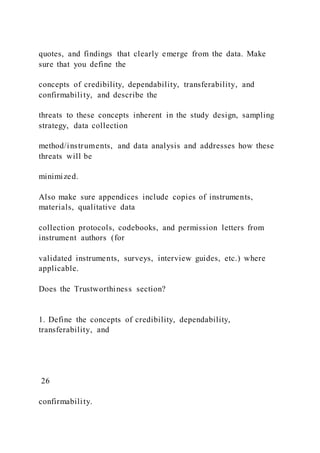
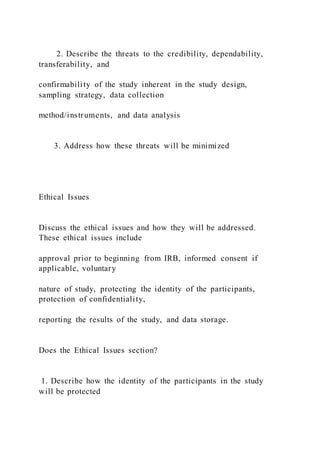



![want your reader to conclude that your proposal (a) addresses a
practical problem with
researching, (b) has a stand-alone literature review that presents
the current research
knowledge regarding your topic/problem, and (c) is capable [via
the methodology] of
answering the primary research question and additional
questions you are posing.
Does the Summary of Chapter 3 section?
1. Summarize the salient points from Chapter 3
2. Reinforce to the reader how the choice of method, data
collection, and data
analysis clearly align with the research problem and research
question.
Include transition to chapter 4 in description
28
CHAPTER 4. DATA ANALYSIS AND RESULTS](https://image.slidesharecdn.com/1chapter1-220920210120-64a59464/85/1CHAPTER-1-INTRODUCTIONIntroduction-to-the-Problem-133-320.jpg)




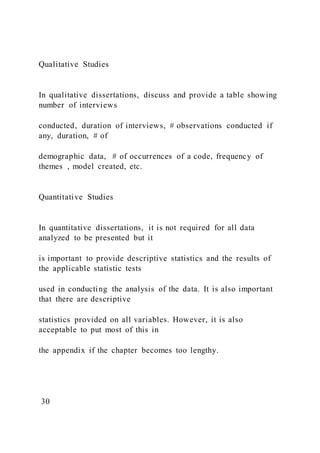




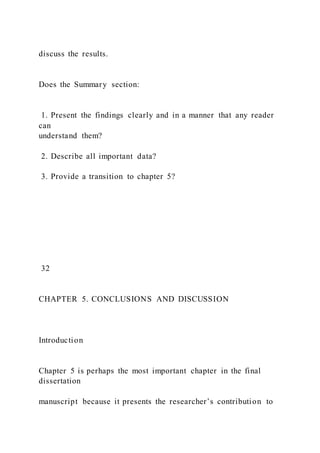



![In this section interpret the results with the related literature
[research and
theory]. What do the results mean? What do the study’s results
mean in light of the
problem or theoretical debate or controversy that drove the need
for the study? What do
the study’s results mean in light of existing findings in the
field? What might the
results mean? Were the research questions adequately
answered? Why did the study’s
results turn out the way they did?
Does the Discussion of the Results section:
1. Interpret the results?
3. Tell the reader what the results mean to the problem or
theoretical
debate that drove the need for the study?
4. Tell the reader whether the research questions were
adequately answered?
5. Tell the reader why the study’s results turned out the way
they did?
Discussion of the Results in Relation to the Literature](https://image.slidesharecdn.com/1chapter1-220920210120-64a59464/85/1CHAPTER-1-INTRODUCTIONIntroduction-to-the-Problem-147-320.jpg)



